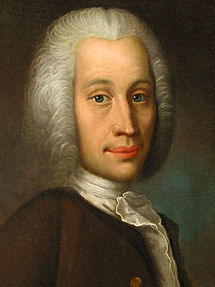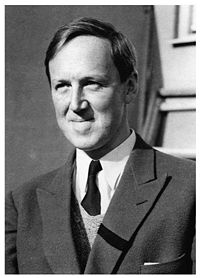From the beginning of time, various people in various ways around the world have distigushed themselves regading the scientific evolution. Many of the fundamental laws of today originate from great philosophers in the late Middle Ages and throughout the very productive period in the beginning of the 20th century, with Albert Einstein, Max Planck, Ervin Scrødinger, Wiliam Heisenberg and Niels Bohr. Today, much of the physics and experiments on our planet Earth, such as the experiments that are carried out at CERN and in space, are conducted to find proof of the fundamental laws formulated by scientists and philosophers and great thinkers of the past. The Nordic countries are no exception, and from the Middle Ages several scientists distinguished themselves in this development. Denmark and Sweden were at one point, from the Middle Ages, regarded as European Great Powers, and were considered hugely vital in the scientific communityy. Norway, at that time, was a part of Denmark, (The Dark Middle Ages), but between 1814 and 1905 a part of Sweden. Finland was in different periods parts of both Sweden and Russia. This has greatly affected the scientific development in the Nordic countries.
Name as Tycho Brahe, Ole Rømer, Anders Celcius, Hans Christian Ørsted, Niels Henrik Abel, Anders Ångstrøm, Svante Arrhenius, Vilhelm Bjerknes, Kristian Birkeland, Niels Bohr and Hugo Alfven will for all future be bundled to large scientific steps forward. In this article, we will introduce some of their scientific history as well as the stories behind the most famous scientists of the Nordic countires. That is only an introduction. Will you learn more, follow the links and a very large amount of more information will be accessible.
The information compiled and edited in this article is provided by Baard Kringen at NordicSpace from information and documentation in different sources, mainly the Wikipedia. All pictures: Wikipedia.
The Basis For the Laws of Planetary Motion
Johannes Kepler is famous for formulating the three fundamental laws of planetary motion, describing elliptical motion of planets around the sun, developing the early telescopes and inventing the convex eyepiece etc. Lesser known is the fact that Johannes Kepler was assistant for the Danish Tycho Brahe from 1600 to Tycho’s death one year later. Johannes Kepler published his first two laws about planetary motion in 1609, after having found them by analyzing the astronomical observations of Tycho Brahe; Kepler’s third law was published in 1619. Much of Keepler’s work was based on Tyco Bradhe’s accurate investigations.
Tycho Brahe (14 December 1546 – 24 October 1601) was a Danish nobleman known for his accurate and comprehensive astronomical and planetary observations. He was born in Scania, then a part of Denmark, now a part of Sweden.
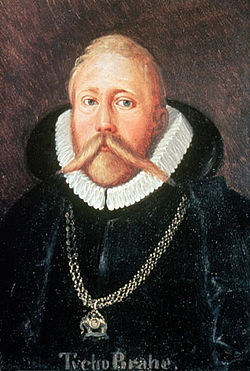
Tycho Brahe
As an astronomer, Tycho worked to combine what he saw as the geometrical benefits of the Copernican system with the philosophical benefits of the Ptolemaic system into his own model of the universe, the Tychonic system. Furthermore, he was the last of the major naked eye astronomers, working without telescopes for his observations. Tycho Brahe was granted an estate on the island of Hven and the funding to build the Uraniborg, an early research institute, where he built large astronomical instruments and took many careful measurements, and later Stjerneborg, when he discovered that his instruments in the former were not sufficiently steady. On the island, he also founded manufactories such as papermaking to provide material for printing his results. After disagreements with the new Danish King Christian IV in 1597, he was invited to Prague, where he became the official imperial astronomer. He built the new observatory at Benátky nad Jizerou. There, from 1600 until his death in 1601, he was assisted by Johannes Kepler, who later used Tycho’s astronomical data to develop his three laws of planetary motion. Although Tycho’s planetary model was soon discredited, his astronomical observations were an essential contribution to the scientific revolution. The traditional view of Tycho is that he was primarily an empiricist who set new standards for precise and objective measurements.
The Speed of Light
The Danish astronomer Ole Rømer, who was working at the Royal Observatory in Paris at the time, used an astronomical measurement to make the first quantitative estimate of the speed of light. When measured from Earth, the periods of moons orbiting a distant planet are shorter when the Earth is closer to the planet than the Earth is farther away from it. The observed change in the moon’s orbital period is actually the difference in the time it takes light to traverse the shorter or longer distance. Rømer observed this effect for Jupiter’s innermost moon Io and deduced that light takes 22 minutes to cross the diameter of the Earth’s orbit. First demonstrated in 1676, that light travelled at a finite speed (as opposed to instantaneously) by studying the apparent motion of Jupiter’s moon Io in. Rømer’s theory was controversial at the time he announced it, and he never convinced the director of the Royal Observatory, Giovanni Domenico Cassini, to fully accept it. However, it quickly gained support among other natural philosophers of the period, such as Christiaan Huygens and Isaac Newton. It was finally confirmed nearly two decades after Rømer’s death, with the explanation in 1729 of stellar aberration by the English astronomer James Bradley. Rømer neither calculated nor gave any value to the speed of light. However, many others calculated speed from his data, the first being Christiaan Huygens, after corresponding with Rømer and eliciting more data; Huygens deduced that light travelled 16 2⁄3 Earth diameters per second.
Ole Christensen Rømer (25 September 1644 – 19 September 1710) was a Danish astronomer.
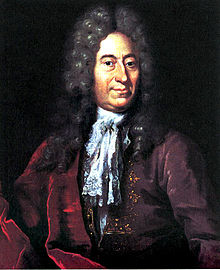
Ole Rømer (Coning_painting)
In 1681, Rømer returned to Denmark from the Royal Observatory in Paris, where he had worked out the theory about calculation of the speed of light. He was appointed as Professor of astronomy at the University of Copenhagen. He was also an observer, both at the University Observatory at Rundetårn and in his home, using improved instruments of his own construction. Unfortunately, his observations have not survived: they were lost in the great Copenhagen Fire of 1728. However, a former assistant (and later an astronomer in his own right), Peder Horrebow, loyally described and wrote about Rømer’s observations. In Rømer’s position as royal mathematician, he introduced the first national system for weights and measures in Denmark on 1 May 1683. In 1700, Rømer managed to get the King to introduce the Gregorian calendar in Denmark-Norway, something Tycho Brahe had argued for hundred years earlier.
The Celsius Temperature Scale
There are mainly three temperature scales in use today, Fahrenheit, Celsius and Kelvin, with Celsius as the main scale for general use worldwide, Fahrenheit is used in some English speaking countries, while Kelvin is much used in connection with the space research and other scientific work. Celsius’s temperature scale, also called centigrade temperature scale, and is the scale based on 0 for the freezing point of water and 100 for the boiling point of water. Invented in 1742 by the Swedish astronomer Anders Celsius, it is sometimes called the centigrade scale because of the 100-degree interval between the defined points. Celsius originally thermometer was calibrated with a value of 100° for the freezing point of water and 0° for the boiling point. In 1745, a year after Celsius’ death, the scale was reversed by Carl Linnaeus (Carl von Linné) to facilitate measurement that is more practical.
Anders Celsius (27 November 1701 – 25 April 1744) was a Swedish astronomer, physicist and mathematician. He was professor of astronomy at Uppsala University from 1730 to 1744, but travelled from 1732 to 1735 visiting notable observatories in Germany, Italy and France. He founded the Uppsala Astronomical Observatory in 1741, and in 1742 proposed the Celsius temperature scale, which bears his name. Celsius conducted many geographical measurements for the Swedish General map, and was one of earliest to note that much of Scandinavia is slowly rising above sea level, a continuous process that has been occurring since the melting of the ice from the latest ice age. However, he wrongly posed the notion that the water of Earth was evaporating.
The Ørsted’s Law
The Ørsted’s Law In physics and electrical engineering, Ørsted’s law is the law that a steady electric current creates a magnetic field around it. Danish physicist Hans Christian Ørsted discovered this on April 21, 1820, when he noticed that the needle of a compass next to a wire carrying current turned so that the needle was perpendicular to the wire. Ørsted investigated and found the mathematical law, which governs how strong the field was, which is now called Ørsted’s Law. Ørsted’s discovery was the first connection found between electricity and magnetism, and the first of two laws that link the two; the other is Faraday’s law of induction. These two laws became part of the equations that govern electromagnetism, Maxwell’s equations.
Hans Christian Ørsted, often rendered Oersted in English, 14 August 1777 – 9 March 1851) was a Danish physicist and chemist who discovered that electric currents create magnetic fields, an important aspect of electromagnetism.
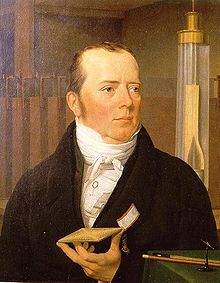
Hans Christian Ørsted
Ørsted was born in Rudkøbing. As a young boy, Ørsted developed his interest in science while working for his father, who owned a pharmacy. He and his brother Anders received most of their early education through self-study at home, going to Copenhagen in 1793 to take entrance exams for the University of Copenhagen, where both brothers excelled academically. In 1801, Ørsted received a travel scholarship and public grant, which enabled him to spend three years travelling across Europe. In Germany, he met the physics Johann Wilhelm Ritter, and their conversations drew Ørsted into the study of physics. He became a professor at the University of Copenhagen in 1806 and continued his research with electric currents and acoustics. Under his guidance, the University developed a comprehensive physics and chemistry program and established new laboratories. After inspiration of corresponding organizations in Europe, Ørsted founded in 1824 Selskabet for Naturlærens Udbredelse (The Society for the Dissemination of Natural Science), still leaving today, a society to disseminate knowledge of the natural sciences. He was also the founder of predecessor organizations, which eventually became the Danish Meteorological Institute and the Danish Patent and Trademark Office. Ørsted was the first modern thinker to explicitly describe and name the thought experiment. In 1825, Ørsted made a significant contribution to chemistry by producing aluminum for the first time. While British scientist and inventor Humphrey Davy had previously developed an aluminum-iron alloy, Ørsted was the first to isolate the element via a reduction of aluminum chloride. In 1829, Ørsted founded Den Polytekniske Læreanstalt (‘College of Advanced Technology’) which was later renamed the Technical University of Denmark (DTU). Ørsted died at Copenhagen in 1851, aged 73. The Ørsted Institute and Denmark’s first satellite is named after him.
The Master of Mathematics
The basis for most of the scientific research is mathematics and developing of this branch is necessary to bring the other fields forward. One of the most remarkable in this field was the Norwegian scientist, Niels Henrik Abel. In spite of his short life, he died only 26 years old, he distinguished himself indeed. Already as an aspiring 16-year-old Abel gave proof to the binomial theorem valid for all numbers, extending Euler’s result, which had held only for rationales. Abel wrote a fundamental piece on the theory of elliptic integrals, containing the foundations of the theory of elliptic functions. Abel showed that there is no general algebraic solution for the roots of a quantic equation, or any general polynomial equation of degree greater than four, in terms of explicit algebraic operations are.
Niels Henrik Abel (5 August 1802 – 6 April 1829) made pioneering contributions in a variety of fields. His most famous single result is the first complete proof demonstrating the impossibility of solving the general quantic equation in
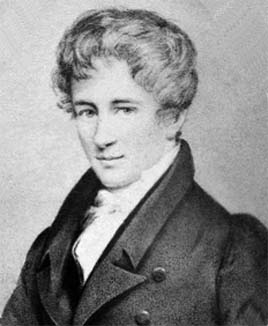
Niels Henrik Abel
radicals. This question was one of the outstanding open problems of his day, and had been unresolved for 250 years. He was also an innovator in the field of elliptic functions and discoverer of Abelian functions. Most of his work was done in six or seven years of his working life. Regarding Abel, the French mathematician Charles Hermite said: “Abel has left mathematicians enough to keep them busy for five hundred years.” Another French mathematician, Adrien-Marie Legendre, said: “quelle tête celle du jeune Norvégien!” (“what a bright person this young Norwegian is!”).
The Very Short Distance
The Angstrom or Ångström is a unit of length equal to 10−10 m (one ten-billionth of a metre) or 0.1 nm. Its symbol is Å, a letter in the Scandinavian alphabets. The Ångström is often used in the natural sciences and technology to express the sizes of atoms, molecules, and microscopic biological structures, the lengths of chemical bonds, the arrangement of atoms in crystals, the wavelengths of electromagnetic radiation, and the dimensions of integrated circuit parts. Atoms of phosphorus, sulfur, and chlorine are 1 Å in radius, while a hydrogen atom is 0.25 Å. The unit was named after the Swedish physicist Anders Jonas Ångström (1814–1874). The symbol is always written with a ring diacritic, as the letter in the Swedish alphabet. Although internationally recognized, the Ångström is not formally a part of the International System of Units (SI); the closest SI unit is the nanometre (10−9 m). In 1960, the metre was redefined in spectroscopic terms, and then the Ångström was redefined as being exactly 0.1 nanometres.
Anders Jonas Ångström was one of the pioneers in the field of spectroscopy, and is known also for studies of astrophysics, heat transfer, terrestrial magnetism, and the aurora borealis.
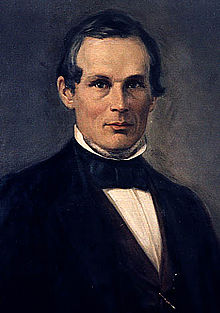
Anders Ångström
In 1852 Ångström formulated in Optiska undersökningar (Optical Examinations), a law of absorption, later to be modified somewhat and to become known as Kirchhoff’s law of thermal radiation. In 1868, Ångström created a chart of the spectrum of solar radiation that expressed the wavelengths of electromagnetic radiation in the electromagnetic spectrum in multiples of one ten-millionth of a millimetre (or 10−7 mm.) Since the human eye is sensitive to wavelengths from about 4000 to 7000 Å, what we commonly call visible light that choice of unit allowed sufficiently accurate measurements of visible wavelengths without resorting to fractional numbers. The unit then spread to other sciences that deal with atomic-scale structures.
The Greenhouse Effect
Most people are now familiar with the facts that increasing amount of CO2 in the air give increasing temperature on Earth, sometimes to be regarded a positive trend, but increasing temperatures give for the most negative effects for the established societies with more violent weather, rising ocean level, decreasing ice and fresh water resources etc. Based on information from his colleagues, the Swedish Swante Arrhenius was the first person to predict that emissions of carbon dioxide from the burning of fossil fuels and other combustion processes were large enough to cause global warming. In his calculation, Arrhenius included the feedback from changes in water vapour as well as latitudinal effects, but he omitted clouds, convection of heat upward in the atmosphere, and other essential factors. His work has, in the belated wisdom, some weakness, but it was the first that point out the effect at the climate.
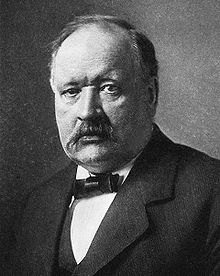
Svante Arrhenius
Svante August Arrhenius (19 February 1859 – 2 October 1927) was a Swedish scientist, originally a physicist, but often referred to as a chemist, and one of the founders of the science of physical chemistry. He received the Nobel Prize for Chemistry in 1903, and in 1905 became director of the Nobel Institute where he remained until his death. The Arrhenius equation, Arrhenius definition of an acid, lunar crater Arrhenius and the Arrhenius Labs at Stockholm University are named after him.
Modern Meteorology
Weather forecasting has exised at all times, but for the most part, it has been based on atmospheric signs and experience, whereas as of today all forecasting is based on mathematical calculations based on the physics laws. Modern meteorology is mainly based on methods developed at the meteorological community in Bergen, Norway, well known as the Bergen School of Meteorology.
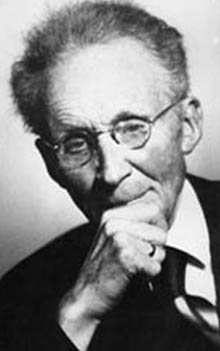
Vilhelm Bjerknes
The meteorologist Prof. Vilhelm Bjerknes and his younger colleagues founded the Bergen School in 1917 attempts to define the motion of the atmosphere by means of the mathematics of interactions between hydro- and thermodynamics, some of which had originally been discovered or explained by Bjerknes himself, thus making mathematical predictions regarding the weather possible by systematic data analysis. Much of the work was done at the Geophysical Institute, University of Bergen, Norway. Wilhelm Bjerknes is also known for the word “to have courage to commit stupidity”. Modern weather forecasting is in steady bettering, and one of the mowing the field forward is the Swedish Carl-Gustaf Arvid Rossby. Rossby came into meteorology and oceanography while studying under Vilhelm Bjerknes in Bergen in 1919.
Understanding the Polar Light Phenomena
The Northern and Southern lights are well known among people who live in the areas of the world where these amazing lights are often spotted throughout the year. However, what were the phenomena and why they came into being was unknown. People in the derelict lands of the northern areas were keen to investigate this further and Kristian Birkeland was such a man. His name is therefore closely linked to the phenomena. A Birkeland current is a set of currents, which flow along geomagnetic field lines connecting the Earth’s magnetosphere to the Earth’s high latitude ionosphere. In the Earth’s magnetosphere, the currents are driven by the solar wind and interplanetary magnetic field and by bulk motions of plasma through the magnetosphere (convection that is indirectly driven by the interplanetary environment). The strength of the Birkeland currents changes with activity in the magnetosphere (e.g. during substorms). Small-scale variations in the upward current sheets (downward flowing electrons) accelerate magnetosphere electrons, which, when they reach the upper atmosphere, create the Aurora Borealis and Australis. The currents were predicted in 1908 by the Norwegian explorer and physicist Kristian Birkeland, who undertook expeditions beyond the Arctic Circle to study the aurora. He rediscovered, using simple magnetic field measurement instruments, that when the aurora appeared the needles of magnetometers changed direction, confirming the findings of Anders Celsius and assistant Olof Hjorter more than a century before. Proof of Birkeland’s theory of the aurora only came after a probe was sent into space. The crucial results were obtained from U.S. Navy satellite, launched in 1963 and carrying a magnetometer above the ionosphere. 1967 is therefore taken as the date when Birkeland’s theory was finally acknowledged to have been vindicated.
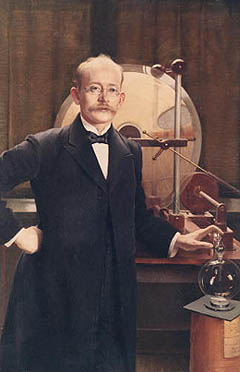
Asta Norregaard. Kristian Birkeland 1900
Kristian Olaf Birkeland (13 December 1867 – 15 June 1917) was a Norwegian scientist, best remembered as the person who first make clear the nature of the Aurora borealis. In order to fund his research on the aurorae, he invented the electromagnetic cannon and the Birkeland-Eyde process of fixing nitrogen from the air. Birkeland was nominated for the Nobel Prize seven times. Birkeland organized several expeditions to Norway’s high-latitude regions where he established a network of observatories under the auroral regions to collect magnetic field data. In 1916, Birkeland was probably the first person to successfully predict that the solar wind behaves as do all charged particles in an electric field: “From a physical point of view it is most probable that solar rays are neither exclusively negative nor positive rays, but of both kinds”. In other words, the Solar Wind consists of both negative electrons and positive ions.
Understanding the Atomic Structure
In atomic physics, the Rutherford–Bohr model or Bohr model, introduced by Niels Bohr in 1913, depicts the atom as a small, positively charged nucleus surrounded by electrons that travel in circular orbits around the nucleus—similar in structure to the solar system, but with attraction provided by electrostatic forces rather than gravity. After the cubic model (1902), the plum-pudding model (1904), the Saturnian model (1904), and the Rutherford model (1911) came the Rutherford–Bohr model or just Bohr model for short (1913). The improvement to the Rutherford model is mostly a quantum physical interpretation of it. The Bohr model has been superseded, but the quantum theory remains sound.
Niels Henrik David Bohr (7 October 1885 – 18 November 1962) was a Danish physicist who made foundational contributions to understanding atomic structure and quantum theory, for which he received the Nobel Prize in Physics in 1922. Bohr was also a philosopher and a promoter of scientific research. The Niels Bohr Institute at University of Copenhagen is named after him. After World War II, Bohr called for international cooperation on nuclear energy. He was involved with the establishment of CERN and the Research Establishment Risø of the Danish Atomic Energy Commission, and became the first chairperson of the Nordic Institute for Theoretical Physics in 1957.
The Alfvén Waves
An Alfvén wave in a plasma is a low frequency (compared to the ion cyclotron frequency) travelling oscillation of the ions and the magnetic field. The ion mass density provides the inertia and the magnetic field line tension provides the restoring force. The wave propagates in the direction of the magnetic field, although waves exist at oblique incidence and smoothly change into the magnetosonic wave when the propagation is perpendicular to the magnetic field. The motion of the ions and the perturbation of the magnetic field are in the same direction and transverse to the direction of propagation. The wave is dispersion less. In order to understand the phenomena in a certain plasma region, it is necessary to map not only the magnetic but also the electric field and the electric currents. Space is filled with a network of currents, which transfer energy and momentum over large or very large distances. The currents often pinch to filamentary or surface currents. The latter are likely to give space, as also interstellar and intergalactic space, a cellular structure.
Hannes Olof Gösta Alfvén (30 May 1908 – 2 April 1995) was a Swedish electrical engineer, plasma physicist and winner of the 1970 Nobel Prize in Physics for his work on magneto hydrodynamics (MHD). He described the class of MHD waves now known as Alfvén waves. He was originally trained as an electrical power engineer and later moved to research and teaching in the fields of plasma physics and electrical engineering. Alfvén made many contributions to plasma physics, including theories describing the behaviour of aurorae, the Van Allen radiation belts, the effect of magnetic storms on the Earth’s magnetic field, the terrestrial magnetosphere, and the dynamics of plasmas in the Milky Way galaxy. His theoretical work on field-aligned electric currents in the aurora (based on earlier work by Kristian Birkeland) was confirmed in 1967, these currents now being known as Birkeland currents. He spoke Swedish, English, German, French, and Russian, and some Spanish and Chinese. Alfvén was one of the few scientists who was a foreign member of both the United States and Soviet Academies of Sciences.



